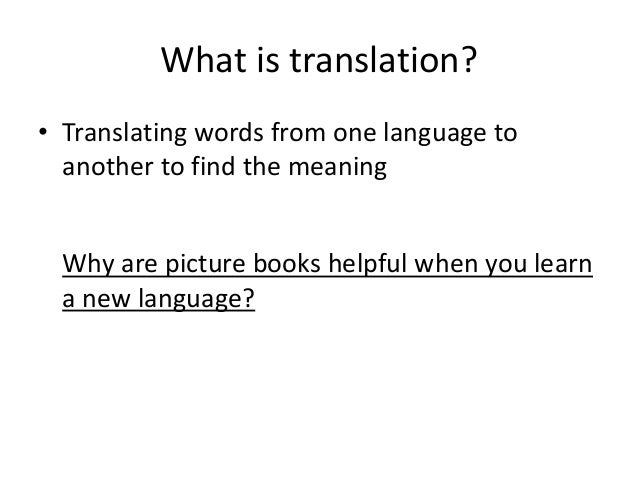


Transcreation is a deeper level of translation. Transliteration would also make it possible to write “good morning” in English using Japanese characters so a Japanese speaker could pronounce “good morning” in English just by reading the Japanese characters.
#Transliteration meaning example professional#
– all these languages may require transliteration, for instance, for an English speaker who cannot read foreign characters or alphabets.įor example, American executives probably can’t read hiragana, one of Japan’s written forms, a professional translator would use transliteration to spell, Ohayōgozaimasu, so it’s legible to them.

Transliteration is used, for example, for a language that uses characters other than Roman characters (the ones we use to write in English). Japanese, Chinese, Korean, Russian, Hebrew, Arabic, etc. Transliteration has more to do with sound than meaning. The translator needs to come up with an equally compelling expression (most likely a Spanish idiom) to capture that same energy or meaning. In this case, “you are dead meat” means “you are a dead man”. Let’s take an easy example: if you come across a part of a story where a character says “you are dead meat…” – that is not going to translate well into Spanish if you do a pure word-for-word substitution. Translation should not be a simple word-for-word replacement, based only on word meaning or definition.Ī comprehensive translation considers multiple factors, including meaning, grammar, contextual meaning, and cultural sensitivities. The process of translation transfers the direct meaning and feeling (or essence) of the written word from one language to another. It is important to understand a little bit more about what each one is, and how it will – or could – come to play in your future translation projects, your conversations and strategic meetings with your translation team. As a client you may hear one or more of these three words – translation, transliteration, and transcreation. For example, it is possible with this technique to use a qwerty keyboard to type text in Cyrillic.Professional translation’s job is to transfer intent, meaning, and culture from a document’s source language to the target language. Transliteration also enables the use of a keyboard in a given script to type in a text in another one. When a user performs a search or indexes content, the transliteration process can find the information written in a different alphabet and returns it into the user’s script. Transliteration is particularly used by libraries or for the processing of textual data. If the source word means nothing in the given language, its transliterated form will also mean nothing, even though it will look like a word in that language as it will be written in its alphabet or syllabic system. In other words, there is no translation involved. The transliteration process means that a word written in a character set like the Latin alphabet is transposed in another, say the Inuktitut syllabics. Romanization (or Latinization) is the transliteration of a non-Latin script into a Latin script. There are many, but the most used for romanization are ISO-9 (for cyrillic), ALA-LC (to represent bibliographic names in the English-world libraries), and BGN/PCGN (for geographical names and personal names). These standards define the transliteration rules: which characters are replaced by which others, and in which case. This is why transliteration standards are used. In a word, the transliteration of a transliterated text should return the original text. The main goal of this conversion operation is to enable the automatic and unambiguous recreation of the original (which is also known as retroconversion). The use of diacritics or digraphs solves the problem of different number of characters between the alphabets of the two writing systems. Transliteration consists in representing the characters of a given script by the characters of another, while keeping the operation reversible.


 0 kommentar(er)
0 kommentar(er)
